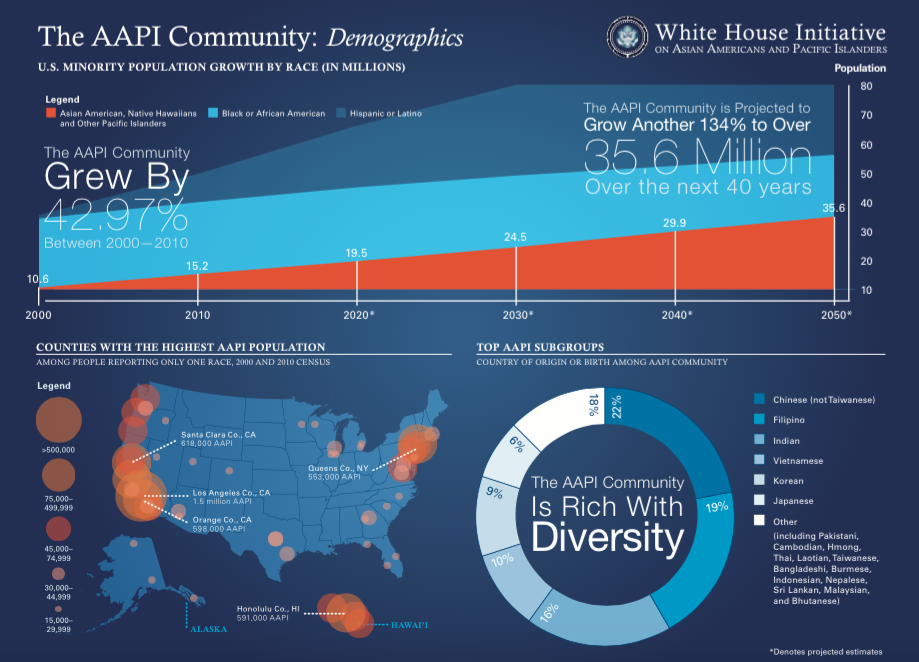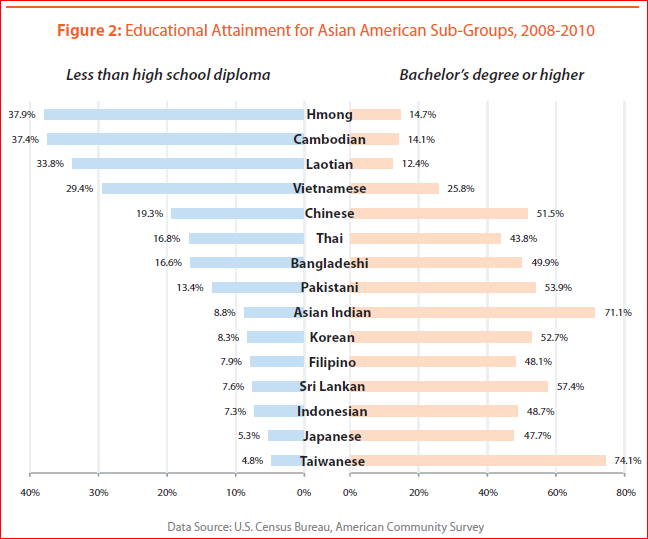Asian-American Youth in Urban Education
Asian Americans and Pacific Islanders in the United States comprise a heterogeneous population. There are approximately 18 million Asian American Pacific Islanders (AAPIs) in the U.S., representing nearly 6% of the total population.1 This community is growing at a record pace, increasing by over 40% in the past decade. By 2050, it is estimated that AAPIs will number more than 43 million and account for almost 10% of the U.S. population.2 Many AAPI communities are located in major urban areas, especially along the West Coast.
 3
3
Asian Americans are generally considered to have achieved educational success when compared to other minority groups. In 2010, 49% of Asian Americans ages 25 and older had a bachelor’s degree, compared with 28% of the U.S. population.4 Due to their educational achievement, Asian-Americans are often viewed as a “model minority”. This stereotype perpetuates the idea that Asian-Americans no longer face barriers in education and makes it easy to overlook the needs of various ethnic groups. However, the wide disparity in educational achievement in the AAPI population is apparent once the data is disaggregated by ethnicity.
 5
5
The perception of Asian-American students as a “model minority” has led to a lack of research and policy surrounding their educational trajectories and the obstacles that these students may face in school. This lack of research negatively impacts Asian-American students, especially immigrant youth or those living in poverty. These students disproportionately live in urban areas, and face many of the same challenges that other students of color face such as access to ELL resources and services, the school to prison pipeline, culturally relevant experiences in school, etc. However, their needs are often overlooked due to the misconception that Asian-American students are all high achieving. As the population of Asian Americans grows, an increasing number of grassroots and national organizations are drawing attention to the obstacles faced by these students in urban, public schools.
